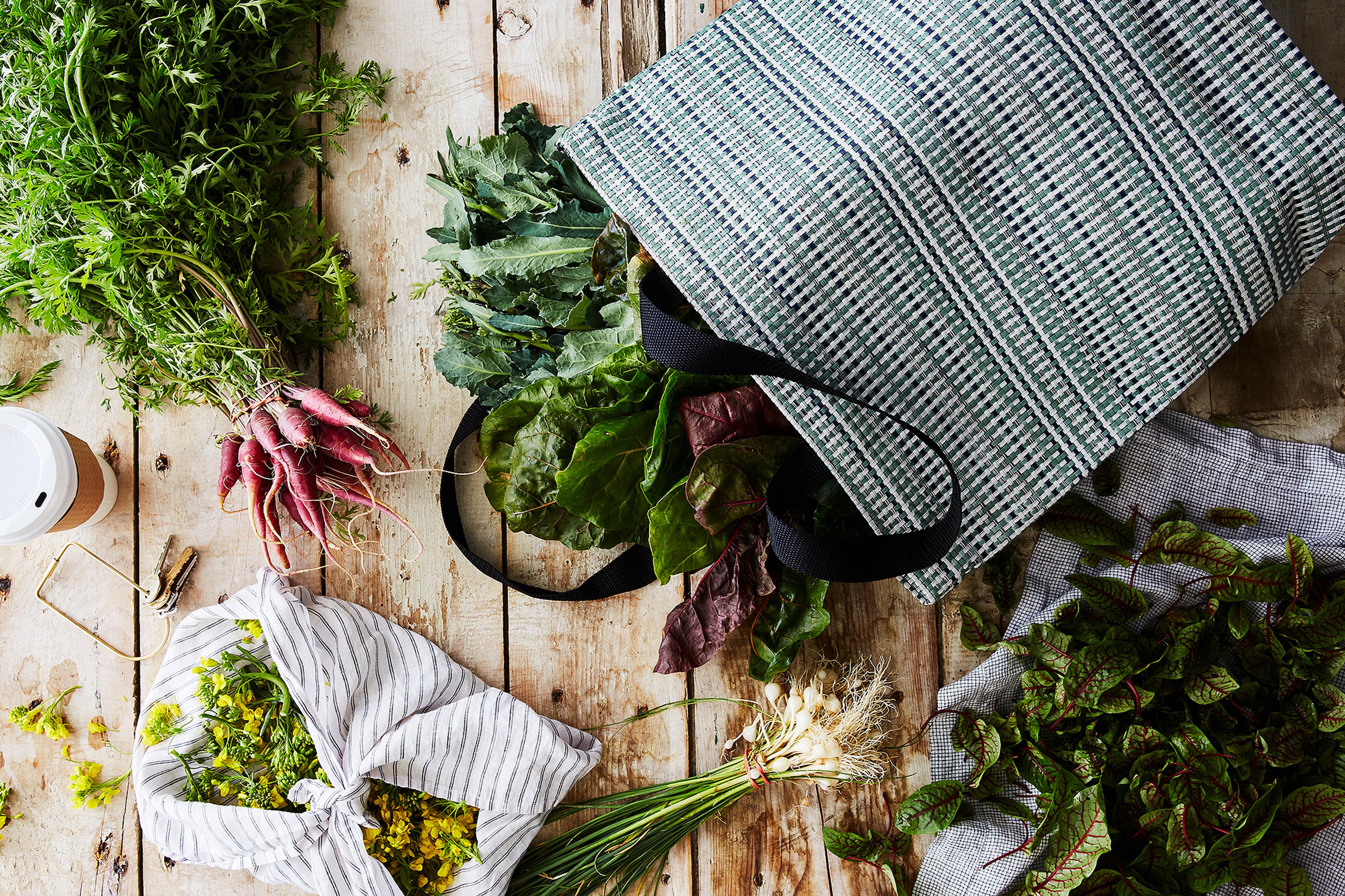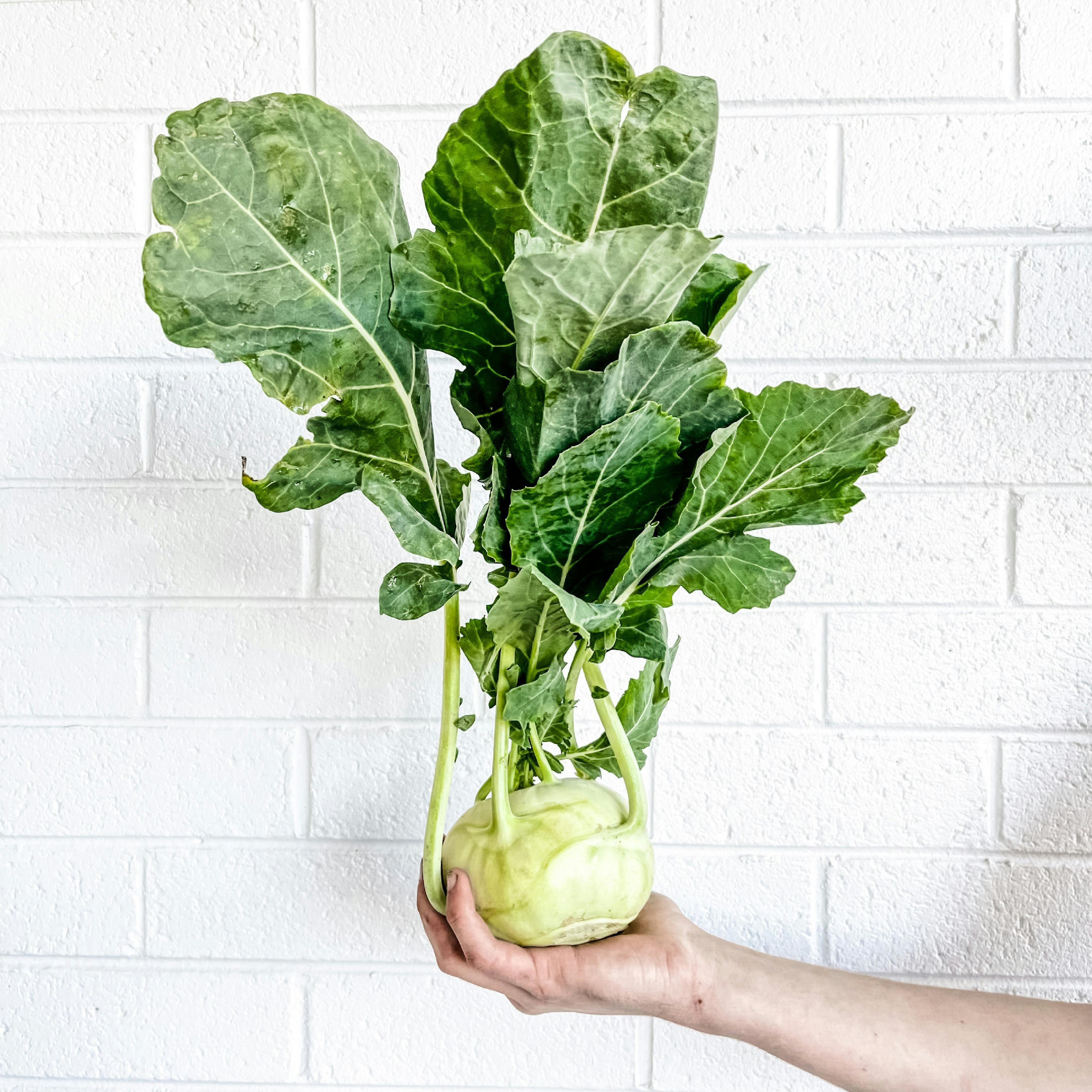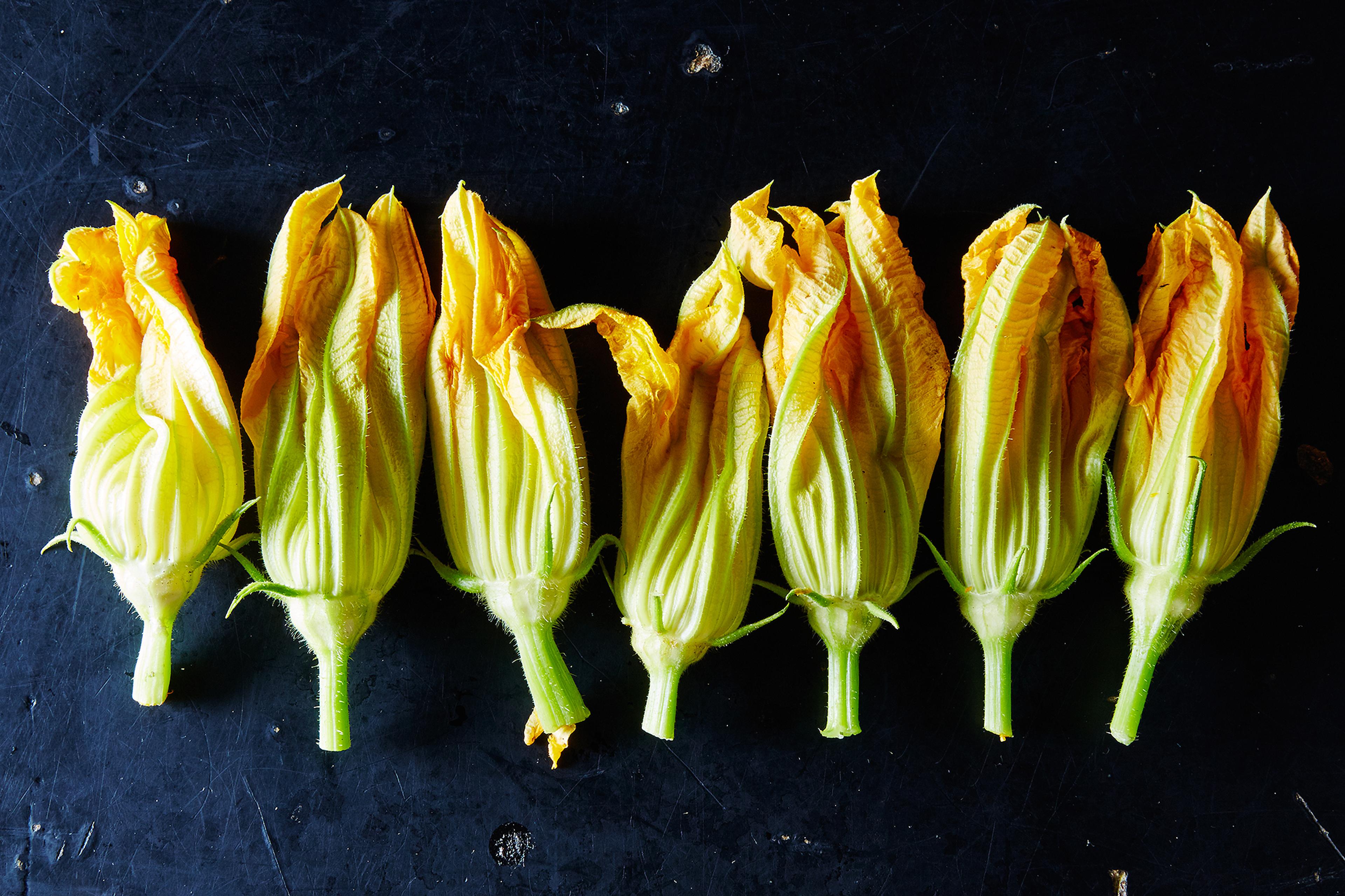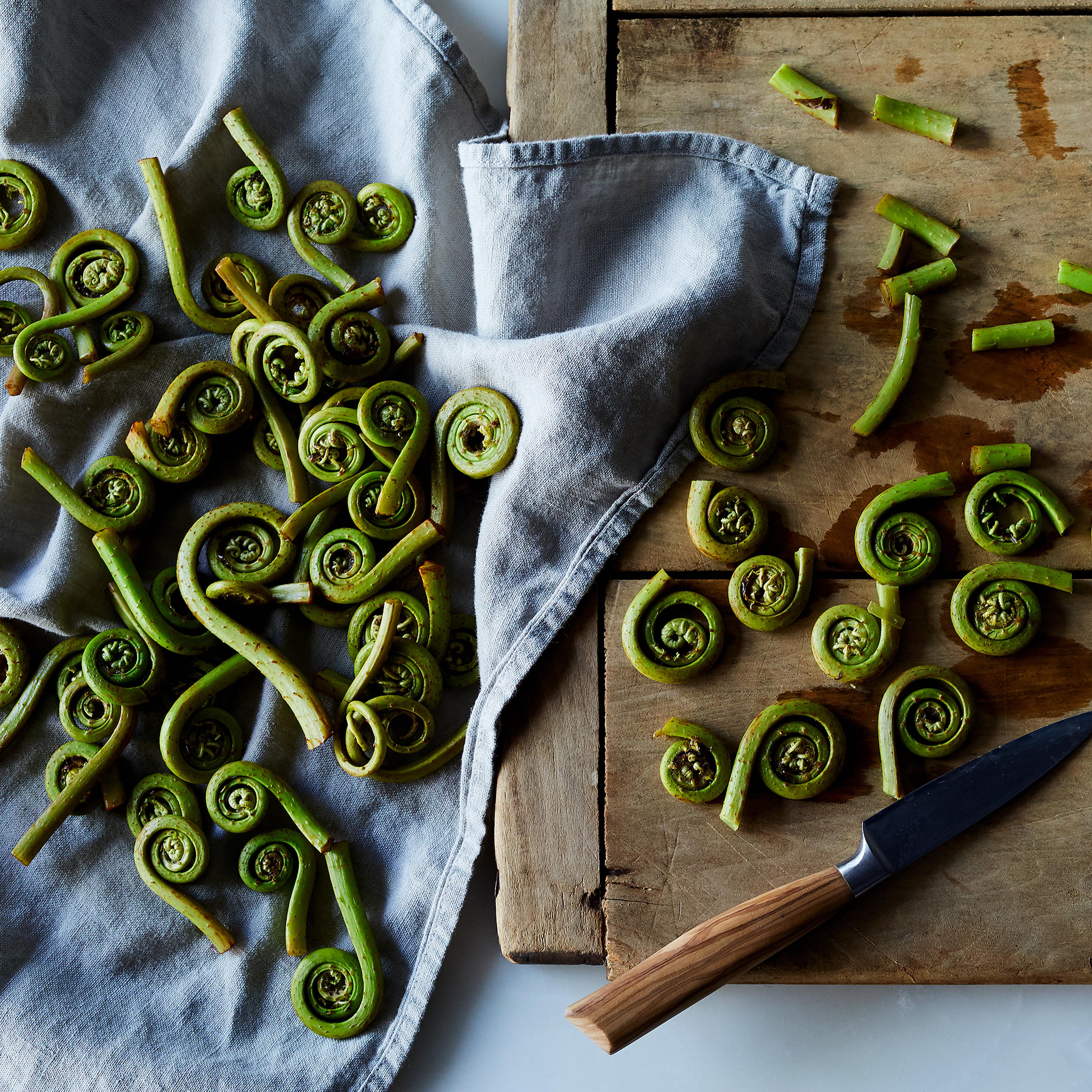6 Unique Farmers’ Market Finds and How to Use Them
Here are the most underrated finds to toss in your tote—and what to do with them once you get them home.
Published On

Photo by Bobbi Lin
Every farmers' market has its stars—tomatoes, peaches, just-picked greens—and then there's the other stuff. The unfamiliar ingredients that sit quietly on the sidelines because no one’s quite sure what to do with them. Think garlic scapes, squash blossoms, or ramps—delicious, short-season gems that are often passed by for safer picks. As a registered dietitian, I chose these six lesser-known ingredients for their unique flavors, versatility in the kitchen, and impressive nutritional benefits. Keep reading to find out what they are, why you should grab them, and exactly how to make them shine in the kitchen.
Garlic Scapes

Photo by Alexandra Stafford
Garlic scapes are the long, curly green stems that grow from the hardneck garlic plants. Their season is short—late spring to early summer—and their raw flavor is milder and more vegetal than garlic cloves. When cooked, they have a slight sweetness similar to roasted garlic. They also come packed with the antioxidants allicin and vitamin C, making them as nutritious as they are tasty.
To use them, treat them a bit like asparagus: grill or sauté with olive oil and coarse salt for a simple side. You can also chop them into omelets, blend them into dips, or swap them in for garlic in dressings. Feeling ambitious? Whip up a garlic scape pesto—it’s bright, punchy, and perfect over pasta, toast, or spread onto a spring flatbread.
Featured Video
Kohlrabi

Photo by Ashleigh Shea // Unsplash
Kohlrabi may look like a UFO, but it’s actually a cousin of cauliflower, broccoli, and cabbage. When choosing one, look for firm, unblemished bulbs and crisp, vibrant leaves—a sign it was recently picked. Beneath its thick, pale green or purple skin is a crisp, juicy interior with a flavor somewhere between a broccoli stem and a radish—slightly peppery, incredibly refreshing.
Available during the summer months, you may find kohlrabi with stems and leaves still attached, all of which are edible. The greens cook down like spinach or kale, while the bulb can be eaten raw (thinly sliced or shredded into slaw), roasted like potatoes, spiralized into noodles, or mashed into a creamy puree.
Bonus: It’s loaded with fiber, vitamin C, and potassium—a total nutrient powerhouse.
Ramps

Photo by Julia Gartland
If garlic and leeks had a wild child, it would be ramps. These springtime alliums have thin white bulbs, broad green leaves, and a garlicky flavor that softens when cooked. They show up in early spring and disappear just as quickly. Similar to other allium vegetables, ramps are rich in antioxidants including vitamin C, and they are a source of prebiotic fiber, which is beneficial for the gut.
Squash Blossoms

Photo by James Ransom
Squash blossoms (aka zucchini flowers) are the bright yellow-orange edible flowers of squash plants, most notably zucchini. They are available late spring through early fall and are very delicate in texture with a subtle squash flavor. Nutritionally, squash blossoms are a good source of antioxidants vitamins A and C, iron, potassium, and dietary fiber.
At the market, look for squash blossoms with tightly closed buds. To prep, gently open the buds, shake out any bugs, remove any pistil or stamen, and gently wash and dry the flowers. From there, you can stuff them with ricotta and herbs and pan-fry until just crisp, or add them raw to salads, eggs, pastas, or quesadillas.
Tip: Be sure to use squash blossoms quickly—they wilt fast and are best enjoyed the same day you buy them.
Fiddleheads

Photo by Julia Gartland
They may look like something from a fairy tale forest, but fiddleheads are simply the tightly coiled tips of Ostrich ferns before they uncoil into mature fronds. Available for just a few weeks in spring, they have a tender-crisp texture and a grassy, slightly nutty flavor somewhere between asparagus, green beans, and broccoli. Fiddleheads are rich in potassium, iron, antioxidants, and omega-3 fatty acids, making them a nutritious standout on your spring table.
Rhubarb
Though it’s often treated like a fruit in the kitchen, rhubarb is actually a vegetable. While you may think it’s pink celery, these crunchy stalks are very tart and sour when raw, mellowing as it cooks and sweetens with sugar. Rhubarb is in season from late April through early June, and while usually only the stalks are for sale, if you happen to buy rhubarb with leaves still attached, discard them immediately—they’re toxic. The edible stalks of rhubarb are full of fiber, along with calcium, potassium, and vitamin C.
The most common use of rhubarb is combined with strawberries in pie or crisps, but this unique veggie can also be stewed with sugar into a jam or compote, folded into muffins, or made into a simple syrup for cocktails. And while it’s not common, thinly sliced rhubarb can be pickled and added to salads for a sour-sweet pop.
Final Thoughts
The beauty of the farmers’ market is the surprise of it all—what you find one week might be gone the next. Ask the farmer about something unfamiliar. Bring it home. Taste it. And let curiosity lead the way.
- 1
How to Cook Fiddleheads, the Vegetable That Tastes of Spring
Intimidated by these furled vegetables? Don't be. Here's how to source and cook fiddlehead ferns to springy perfection.
- 2
5 Meals to Make With Your Farmers Market Haul
From charred peach salsa to caramelized pancakes, this week’s plan is packed with flexible, flavor-filled recipes.
- 3
Rhubarb Chutney
In this edition of Small Batch, Marisa McClellan of Food In Jars teaches us a thing or two about rhubarb chutney.
- 4

5 Fruit-Forward Meals for Your Summer Menu
Your weekly Forkcast is here—and this time, it’s all about peaches and blueberries in sweet-savory combos you’ll love.